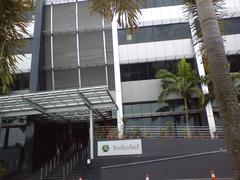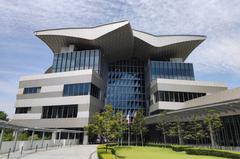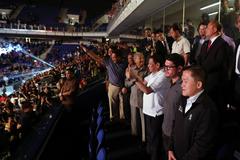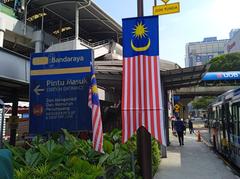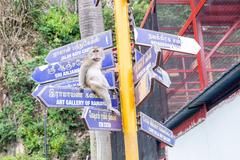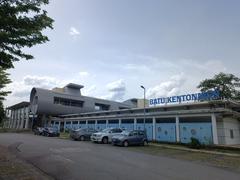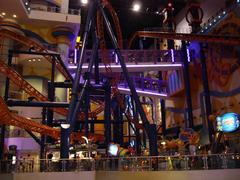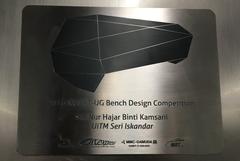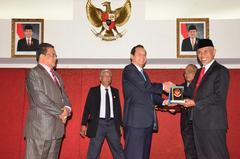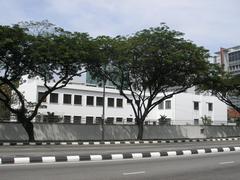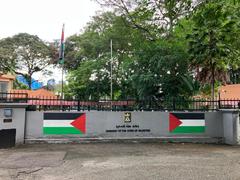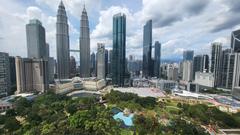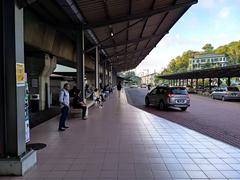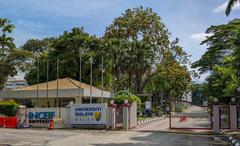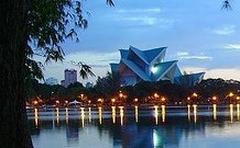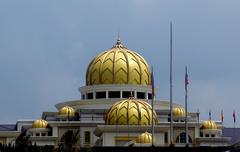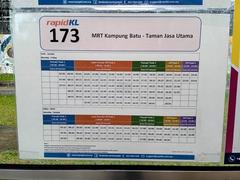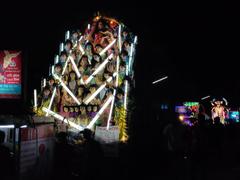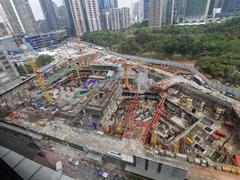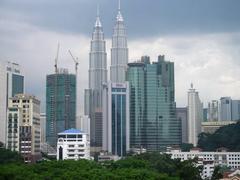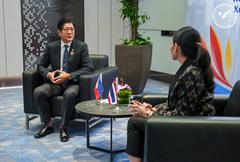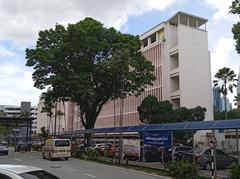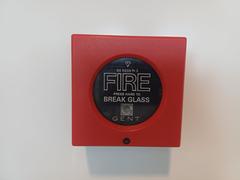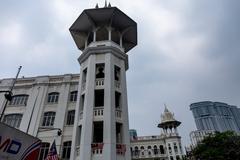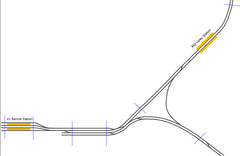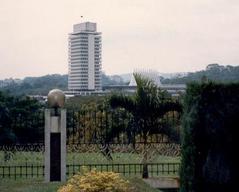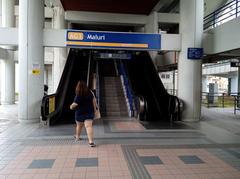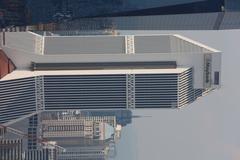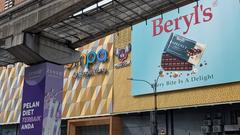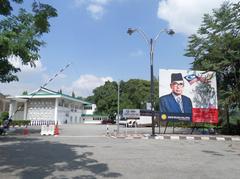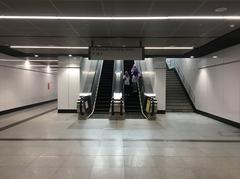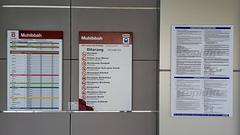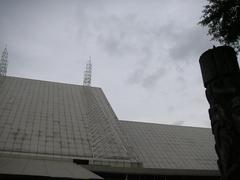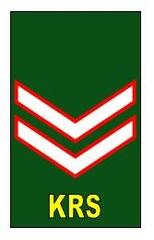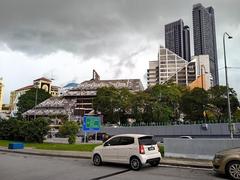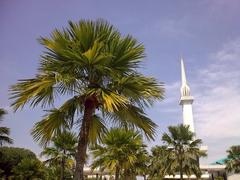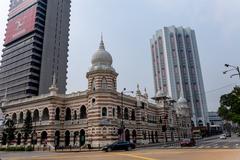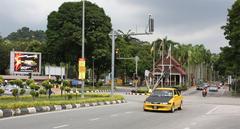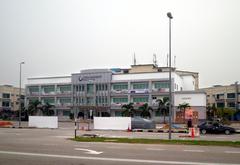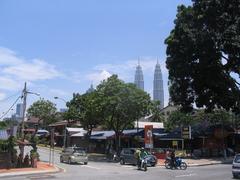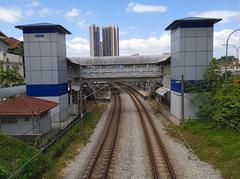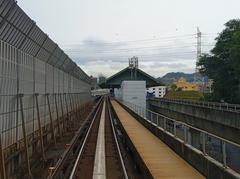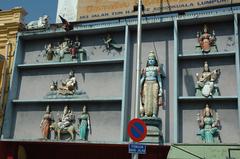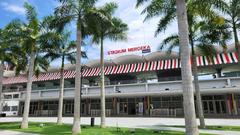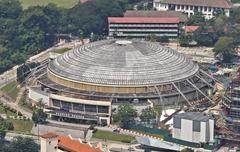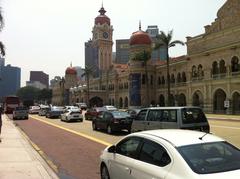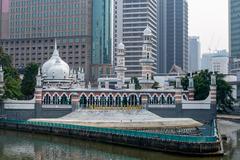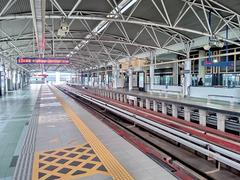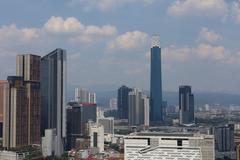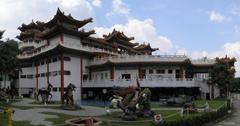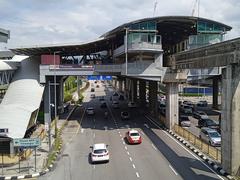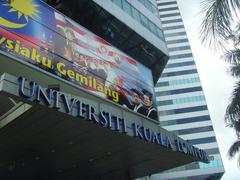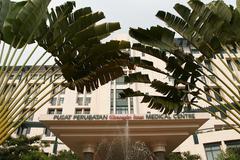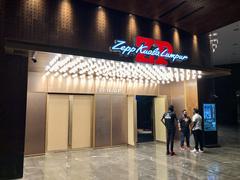
Comprehensive Guide to Visiting Kuala Lumpur, Malaysia
Date: 13/08/2024
Captivating Introduction
Welcome to Kuala Lumpur, a city where history and modernity dance in a harmonious tango. Picture this: the skyline punctuated by the majestic Petronas Twin Towers, once the tallest buildings in the world, juxtaposed with colonial-era architecture and vibrant street markets. Kuala Lumpur, affectionately known as KL, is a melting pot of cultures, where Malay, Chinese, Indian, and indigenous traditions blend seamlessly. Did you know that KL started as a humble tin mining settlement in 1857? A group of Chinese miners, led by Raja Abdullah, settled at the confluence of the Klang and Gombak rivers, unknowingly laying the foundation for Malaysia’s bustling capital (Odynovo Tours). Fast forward, and you’ll find yourself in a city that never sleeps, filled with mouth-watering street food, lush green spaces, and architectural marvels. Are you ready to embark on an adventure that will tickle your senses, challenge your perceptions, and leave you yearning for more? Let’s dive into the heart of Kuala Lumpur, where every corner tells a story, and every story is a gateway to a new experience.
Table of Contents
History of Kuala Lumpur
Early Settlement and Tin Mining (1857-1880)
In 1857, a group of 87 Chinese tin miners, led by Raja Abdullah, stumbled upon the confluence of the Klang and Gombak rivers. Amidst the harsh, malaria-infested jungles, they established a settlement in Ampang, drawn by the glint of tin. By 1859, tin exports from Ampang via Klang marked the beginning of Kuala Lumpur’s economic journey.
In the 1860s, enterprising figures like Hiu Siew, Ah Sze, and Sutan Puasa set up shop along the Klang River’s east banks, turning the area into a bustling hub. Kuala Lumpur’s rectangular town center began to take shape.
British Colonial Era (1880-1957)
In 1880, Kuala Lumpur replaced Klang as the state capital of Selangor, thanks to Sir Frank Swettenham, the British Resident. Swettenham’s vision saw the construction of the Klang-Kuala Lumpur Railway and the promotion of brick and tile buildings for fire prevention and health improvement. By 1895, Kuala Lumpur’s central location made it the capital of the Federated Malay States.
The early 20th century was a whirlwind of development. The Selangor Golf Club opened in 1921, the first petrol station popped up, and the Federal Town Planning Department was established. The city’s population skyrocketed, reaching 80,000 by 1922 and 115,000 by 1931. The Japanese occupation during World War II (1941-1945) was a dark chapter, with bombings and the destruction of the Selangor Museum. The Japanese surrendered in 1945 at the Victoria Institution, and British administration was restored.
Path to Independence (1952-1957)
Kuala Lumpur’s political landscape shifted in 1952 with its first municipal election. The United Malays National Organisation (UMNO) and the Malaysian Chinese Association (MCA) formed an alliance, winning 9 out of 12 seats. This alliance evolved into the Alliance Party, which included the Malaysian Indian Congress (MIC) and contested the first Malayan General Election in 1955.
August 31, 1957, marked Malaysia’s independence from British rule. The first Malayan flag was raised at Merdeka Square, solidifying Kuala Lumpur’s role as the capital.
Post-Independence Development (1957-1990)
Post-independence, Kuala Lumpur underwent rapid modernization. The Muzium Negara (National Museum) opened in 1963, followed by the National Mosque in 1965. The city was granted city status in 1972 and seceded from Selangor to become a Federal Territory in 1974.
The 1980s and 1990s were marked by the construction of iconic landmarks like the Dayabumi Complex (1984), Maybank Tower (1987), and the Kuala Lumpur Tower (1995). These developments transformed the city’s skyline, establishing Kuala Lumpur as a major financial and commercial hub in Southeast Asia.
Modern Era (1990-Present)
The late 20th and early 21st centuries saw Kuala Lumpur’s rise as a global city. The Petronas Twin Towers, completed in 1998, stood as the world’s tallest buildings until 2004 and remain an iconic symbol of Malaysia’s progress. The city continued to expand with the Kuala Lumpur Monorail opening in 2003 and the Pavilion shopping mall in Bukit Bintang in 2007.
In recent years, Kuala Lumpur has focused on sustainable development and urban revitalization projects. The River of Life project, initiated in 2012, aims to rejuvenate the Klang and Gombak rivers, transforming them into vibrant waterfront areas. The Exchange TRX, opened in 2023, is linked to the second tallest building in Malaysia, The Exchange 106.
Cultural Significance and Festivals
Kuala Lumpur’s cultural diversity shines through its numerous festivals and public holidays. Chinese New Year, celebrated in January or February, dazzles with vibrant parades and traditional performances. Hari Raya Aidil Fitri, marking the end of Ramadan, brings the Malay community together for feasts and communal prayers.
Merdeka Day on August 31 commemorates Malaysia’s independence from British rule. The day is marked by patriotic displays, parades, and cultural performances, with Merdeka Square as the focal point.
Significance of Kuala Lumpur
The Cultural Melting Pot
Kuala Lumpur is a giant cultural stew simmering with flavors from Malay, Chinese, Indian, and indigenous communities. This diversity is visible in the city’s festivals, food, and religious sites. The Batu Caves, a stunning limestone hill with cave temples, is a major Hindu site and a tourist magnet (Salt in Our Hair).
Architectural Wonders
KL’s skyline is a mix of the old and the ultramodern. The Petronas Twin Towers, standing at 452 meters, reign supreme as the tallest twin towers globally. Walk the Skybridge or visit the observation deck for killer city views (Agoda). The Kuala Lumpur Tower also offers a 360-degree cityscape (Odynovo Tours).
Nature in the Urban Jungle
KL Forest Eco Park, one of Malaysia’s oldest forest reserves, established in 1906, offers nature trails, canopy walks, and a biodiversity haven (Agoda). The KL Butterfly Park, with over 5,000 butterflies, is another natural gem (Odynovo Tours).
Venturing into Dark Tourism
For the thrill-seekers, KL has its share of eerie spots. Pudu Prison, dating back to the British colonial era, was known for public executions and notorious inmates. Though mostly demolished, its remnants are now part of the park around Bukit Bintang City Centre (Malay Mail).
Foodie Paradise
Kuala Lumpur’s food scene is a smorgasbord of flavors. From hawker stalls to fine dining, there’s something for every palate. Don’t leave without trying nasi lemak, char kway teow, and roti jala. For the best street food, hit up Jalan Alor (Agoda).
Shop Till You Drop
KL is a retail wonderland. Bukit Bintang is your go-to for high-end malls like Pavilion Kuala Lumpur and Berjaya Times Square. For a more local vibe, check out Central Market for handicrafts and souvenirs (Salt in Our Hair).
Visitor Tips
Best Time to Visit
Kuala Lumpur is warm and humid year-round, thanks to its tropical rainforest climate. The best time to visit is from May to July or December to February. Pro tip: sudden showers are part of the KL experience, so pack an umbrella.
Visa Requirements
Citizens from the US, UK, Canada, and many European countries can enjoy a visa-free stay in Malaysia for up to 90 days. Check the latest updates on the official Malaysian immigration website.
Currency
The Malaysian Ringgit (MYR) is the currency you’ll be spending. While plastic is fantastic in hotels and malls, keep some cash for street food and markets. ATMs are around every corner, and you can exchange currency at the airport, major hotels, and shopping centers.
Language
Malay (Bahasa Malaysia) is the official language, but English is widely spoken, especially in touristy areas. Here’s a quick lingo lesson:
- Hello = Hello (easy, right?)
- Thank you = Terima kasih (teh-ree-mah kah-see)
- How much? = Berapa? (ber-ah-pah)
Getting Around
KL’s public transportation is top-notch. The KLIA Ekspres zips you from the airport to the city center in 28 minutes flat! For short trips, the LRT and Monorail are your best friends. Grab, the local ride-hailing app, is a lifesaver. For more details, check out the KLIA Ekspres website.
Where to Stay
From budget hostels to luxury hotels, KL has it all. Bukit Bintang is the place to be for nightlife and shopping, while KLCC is home to the majestic Petronas Twin Towers. For a cultural vibe, try Chinatown or Little India. Pro tip: book early during peak seasons to snag the best deals.
Safety
KL is generally safe, but stay vigilant. Keep an eye on your belongings in crowded places and avoid poorly lit areas at night. Stick to reputable taxi services or ride-hailing apps for peace of mind.
Health and Hygiene
Stick to bottled water; tap water isn’t recommended. Healthcare in KL is excellent, with numerous hospitals and clinics. Travel insurance covering medical expenses is a smart move.
Cultural Etiquette
Malaysia’s multicultural fabric is rich and diverse. Dress modestly at religious sites and remember to remove your shoes. A slight bow or nod is a polite greeting. Public displays of affection? Best avoided. And steer clear of sensitive topics like politics and religion.
Food
KL is a foodie paradise. From Malay to Chinese, Indian, and Western cuisines, your taste buds are in for a treat. Street food is a must-try. Head to Jalan Alor and Petaling Street for a feast. For a more upscale experience, Bukit Bintang and KLCC are your go-to spots. Always go for freshly prepared and hot food to avoid any tummy troubles.
Shopping
Shopping in KL is an experience. From luxury malls like Pavilion KL and Suria KLCC to traditional markets like Central Market and Petaling Street, there’s something for everyone. Bargaining is expected in street markets, so practice your haggling skills!
Hidden Gems
- Whispering at Batu Caves: Not just for Hindus, the limestone caves offer a spiritual experience and a workout with 272 steps!
- SkyBar at Traders Hotel: Sip a cocktail with a view of the Petronas Twin Towers. It’s a sight to behold, especially at night.
- Heli Lounge Bar: A helipad by day, a bar by night. The 360-degree view of KL’s skyline is worth the visit.
Attractions
From the iconic Petronas Twin Towers to the historic Sultan Abdul Samad Building, KL is brimming with attractions. Dive into local culture in Chinatown and Little India or escape to nature at Perdana Botanical Gardens. For a day trip, head to Kuala Selangor for fireflies and the Sky Mirror. Need more ideas? Check out this Kuala Lumpur itinerary.
Connectivity
Free Wi-Fi is everywhere, from cafes to malls. For seamless connectivity, grab a local SIM card from Maxis, Celcom, or Digi at the airport. More info on getting a SIM card is available on the KLIA website.
Money-Saving Tips
- Attraction Tickets: Hunt for online deals on websites like Klook and KKday.
- Transportation: Use public transport and get a MyRapid card for discounts.
- Food: Street food is your wallet’s best friend. Avoid overpriced tourist traps.
For more tips, visit this Kuala Lumpur travel guide.
Seasonal Highlights
KL celebrates various festivals throughout the year. From Chinese New Year to Deepavali and Hari Raya, each festival brings its own magic. Don’t miss the colorful decorations and festivities!
FAQs
- Is Kuala Lumpur safe for solo travelers? Yes, but like any big city, stay aware of your surroundings.
- Do I need to tip? Tipping isn’t customary but appreciated for exceptional service.
- What’s the best way to get around? Public transport is efficient and affordable. Ride-hailing apps are also reliable.
Call to Action
As your journey through Kuala Lumpur comes to an end, you’ll find that the city has woven itself into your heart. From the bustling streets of Bukit Bintang to the serene temples of Batu Caves, KL is a city of contrasts that captivates and inspires. Whether you’re marveling at the view from the Petronas Twin Towers or savoring a plate of nasi lemak in Jalan Alor, each experience is a testament to the city’s rich history and vibrant present. Kuala Lumpur is not just a destination; it’s a story – one that continues to evolve with each passing day. Remember, the best way to truly uncover the city’s secrets and stories is with Audiala, your personal tour guide app. Download Audiala and let it be your companion as you explore KL’s hidden gems and historical landmarks. Until next time, selamat jalan (safe travels)!
References
- Odynovo Tours, 2023, Travel Guide to Kuala Lumpur (source)
- Salt in Our Hair, 2023, Malaysia Travel Guide (source)
- Agoda, 2023, Unveiling Kuala Lumpur: Top 20 Must-Do Activities for Every Traveler (source)
- Agoda, 2023, Discovering the Urban Oasis: A Complete Travel Guide to KL Forest Eco Park in Kuala Lumpur (source)
- Malay Mail, 2024, From War Memorials to Spooky Buildings: Here’s a Look at Malaysia’s Top Dark Tourism Spots (source)
- Culture Trip, 2023, 10 Tips Every Traveler Should Know Before Visiting Kuala Lumpur (source)
- Dive Into Malaysia, 2023, Kuala Lumpur Itinerary (source)
- Where is Mai, 2023, Kuala Lumpur Travel Guide Blog (source)
- KLIA Ekspres, 2023, Travel Guide (source)






